Sakkarai Pongal or the Sweet Pongal is one of those ubiquitous South Indian sweets that is made on every occasion and is a crowd favourite. Also referred to colloquially as Chakkara Pongal, this simple dish is absolutely divine when made well.
I had first posted this recipe on January 1, 2013 and so the post started with Happy New Year 2013! Here is a sweet recipe to start the new year. 🙂 I am updating the recipe for Sakkarai Pongal today with tips, recipe card, step-by-step instructions and photos in honor of the upcoming Navratri.
Sakkarai Pongal is a super simple South Indian sweet dish made with moong dal (husked green gram), rice and jaggery. While it is a must for Sankranti or Pongal, it is also made for many other festive meals and poojas. In fact, Chakkara Pongal is a must have naivedyam for Navratri.
Some Tips to Help You Make the Perfect Sakkarai Pongal (Sweet Pongal)
- Slow and uniform roasting of the moong dal a key element that adds to the flavour and texture of a great Sweet Pongal. Be sure to dry roast the dal on low to medium heat and while stirring it constantly.
- I use 2/3 cup of Moong Dal for 1 cup of rice. I find that this gives me the most even balance of flavours.
- Traditionally, only jaggery is used to make Sakkarai Pongal.
- You can cook the pongal in a mix of milk and water or just water. I do not use any milk.
- Cook the dal and rice mix till are mashable so that you get a nice gooey Chakkara Pongal.
- Using relatively new rice (not aged rice) for a soft texture.
The Use of Sugar or Jaggery to Make Sakkarai Pongal
As I mentioned, Sweet Pongal or Sakkarai Pongal is commonly made with jaggery. However, if as you travel across South India, you will find that people also use sugar, Kalkandu (suar candy), or then a mix of jaggery and sugar. Each version is delicious in its own way; however, people have very strong preferences. That such a simple dish as Sakkarai Pongal can evoke so many emotions is something that always astonishes me; then I think of my own reactions to Filter Coffee and Pulihora and I suddenly become more understanding. 🙂
Sakkarai Pongal As the First Course of a Traditional Meal
In South India, a sweet like Sakkarai Pongal is served as the first course of a meal. The sweet taste is supposed to get your digestive juices flowing and help in digestion. Of course, it is also a sweet start to the hearty meal that follows.
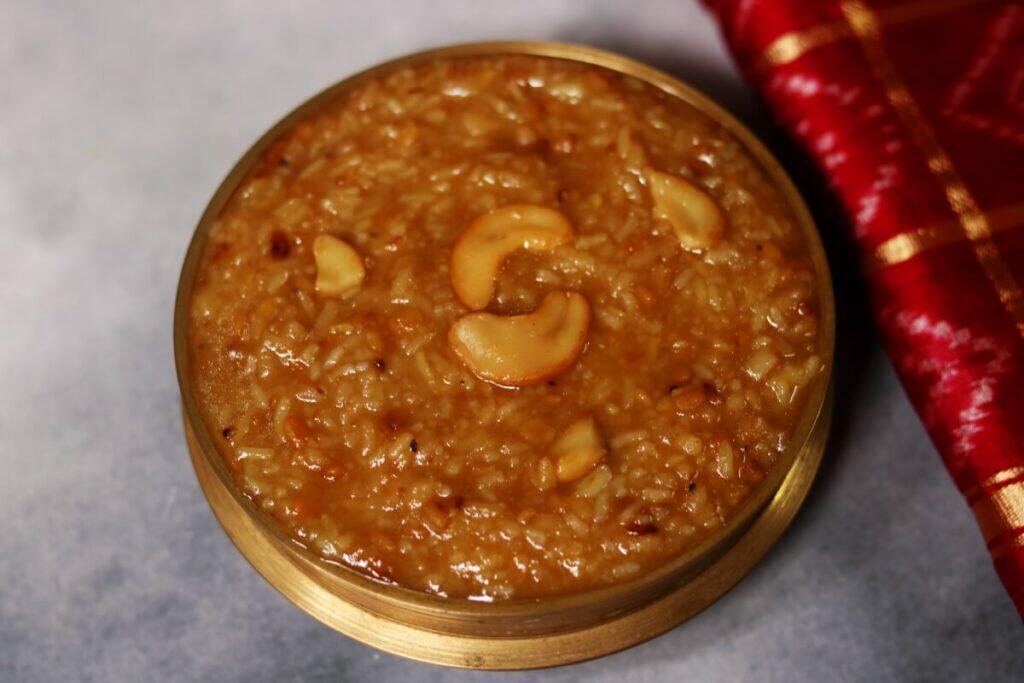
Other Pongal Recipes You May Want to Try
- Katte Pongali or Ven Pongal (Savoury Pongal)
- Pulagam – A Popular Naivedyam from Andhra Pradesh
- Rava Pongal – Sankranti Special Recipe
- Sugarcane Juice Pongal | Cheruku Rasam Pongali | Karumbu Chaaru Pongal
- Kuthiraivali Pongal | Udalu Katte Pongali |Barnyard Millet Pongal
How to Make Sakkarai Pongal or the Sweet Pongal
- Getting the Moong Dal Ready
- Roast 1/3 cup moong dal till it turns light golden brown.

- Roast 1/3 cup moong dal till it turns light golden brown.
- Cooking the Moong Dal and Rice
- Wash 1/2 cup rice well under running water.
- In a large vessel, mix rice, roasted moong dal and 2.5 cups water. You can also use 2 cups water and 0.5 cup milk, if you so wish.

- Cook the mix in a pressure cooker for 4 to 5 whistles. The dal rice mix should be soft and mashable.
- After the pressure cooker has depressurised, take out the dal rice mix and mix it using a heavy ladle so that the mix is a bit mashed.

- Making the Jaggery Syrup
- To a heavy-bottomed vessel, add 1.25 cups jaggery and 1/2 cup water.
- Over low to medium heat, cook till the jaggery melts and forms a thick syrup.

- Add 1/2 tsp cardamom powder to the jaggery mix.

- Putting It All Together
- Add the cooked rice + dal mix to the jaggery syrup and mix well.
- Over medium heat, cook the mix for 2 to 3 minutes till all the syrup is absorbed.

- Add 1 tbsp ghee and mix well.

- Turn off the heat.
- In a ladle, heat 1 tbsp ghee.
- Add split cashew nuts and fry till golden brown.

- Add the ghee and fried cashews to the Sakkarai Pongal and mix well.

- Serving Suggestions
- Sakkarai Pongal | Chakkara Pongal tastes best when served warm (or even hot).
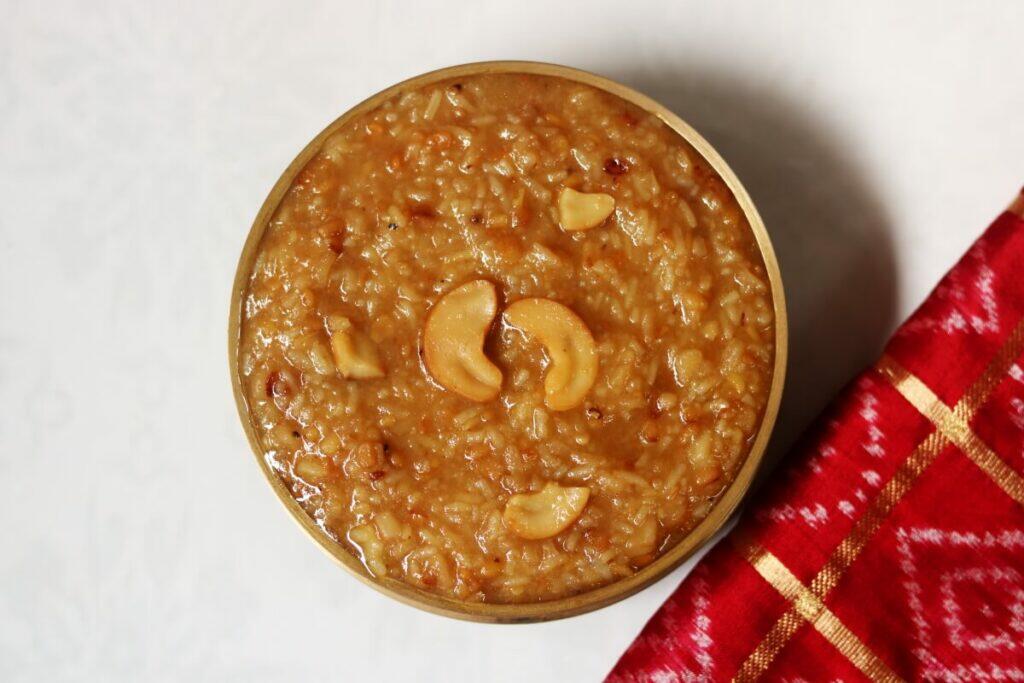
Recipe for Sakkarai Pongal | Chakkara Pongal
Sakkarai Pongal | Chakkara Pongal | Sweet Pongal
Equipment
- Pressure Cooker (Min 3 litrs capacity)
- Heavy-bottomed vessel or kadhai (1 litre capacity)
- Steel Vessel (1 litre capacity)
- Ladle
Ingredients
- 1/2 Cup Rice
- 1/4 Cup Moong Dal
- 2.5 Cup Water (or 2 cups water and 0.5 cup milk)
- 1.25 Cups Grated Jaggery
- 1/2 Cup Water
- 1/2 tsp Cardamom Powder
- 8 to 10 Cashews
- 2 tbsp Ghee
Instructions
- Roast 1/3 cup moong dal till it turns light golden brown.
- Wash 1/2 cup rice well under running water and drain all the water.
- In a large vessel, mix rice, roasted moong dal and 2.5 cups water.
- Cook the mix in a pressure cooker for 4 to 5 whistles. The dal rice mix should be soft and slightly mashable.
- After the pressure cooker has depressurised, take out the dal rice mix and mix it using a heavy ladle so that the mix is a bit mashed.
- To a heavy-bottomed vessel, add 1.25 cups jaggery and 1/2 cup water.
- Over low to medium heat, cook till the jaggery melts and forms a thick syrup.
- Add 1/2 tsp cardamom powder to the jaggery mix.
- Add the cooked rice + dal to the jaggery syrup and mix well.
- Over medium heat, cook the mix for 2 or 3 minutes.
- Add 1 tbsp ghee and mix well.
- Turn off the heat.
- In a ladle, heat 1 tbsp ghee.
- Add split cashew nuts and fry till golden brown.
- Add the ghee and fried cashews to the Sweet Pongal and mix well.
- Sakkarai Pongal | Chakkara Pongal tastes best when served warm (or even hot).
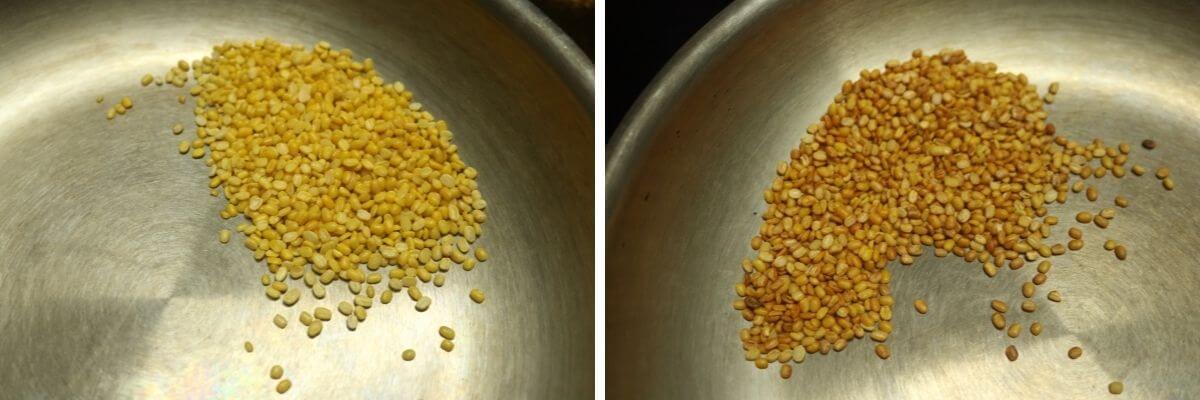
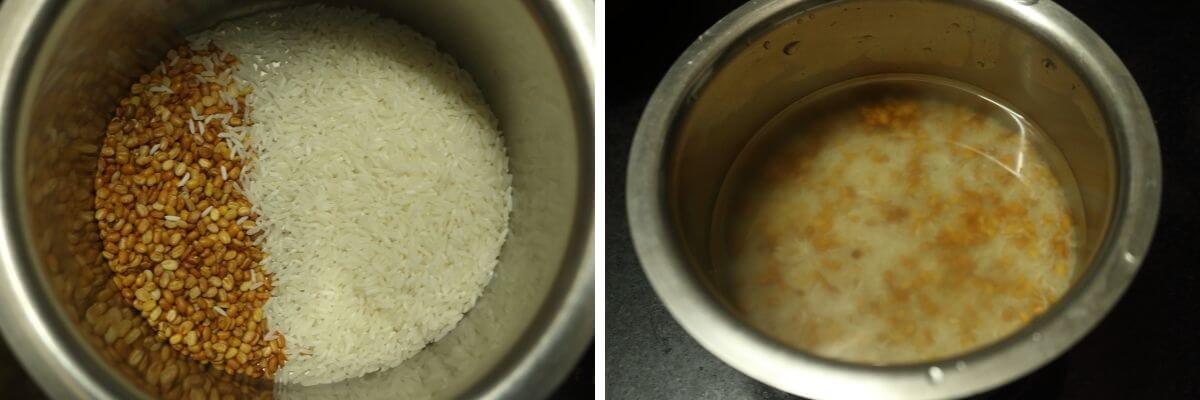

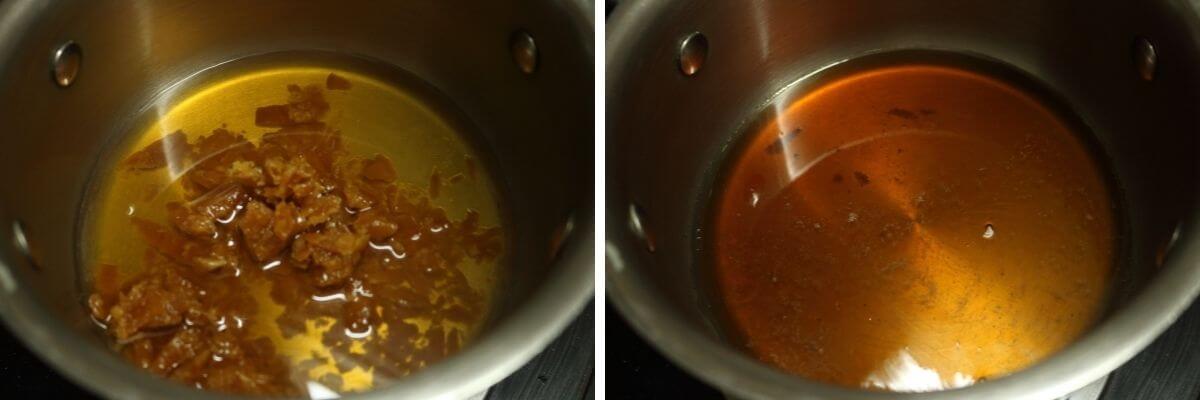

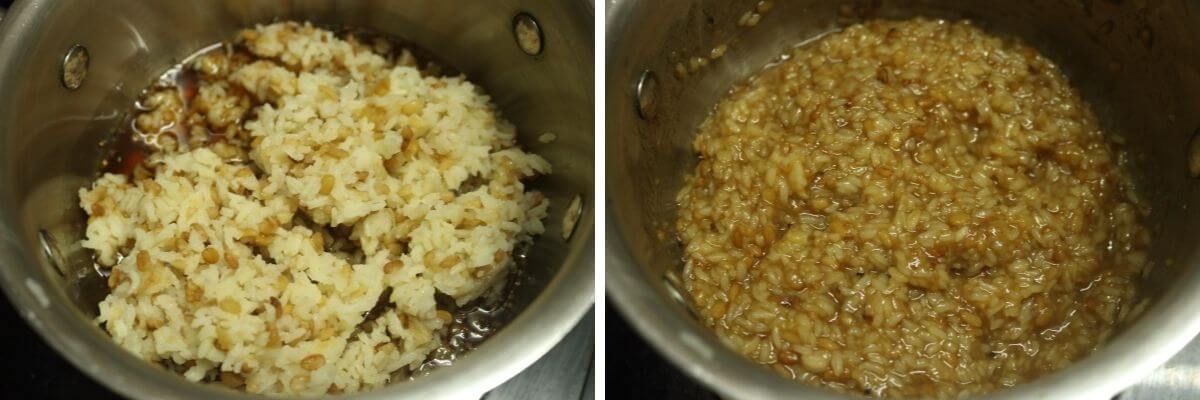
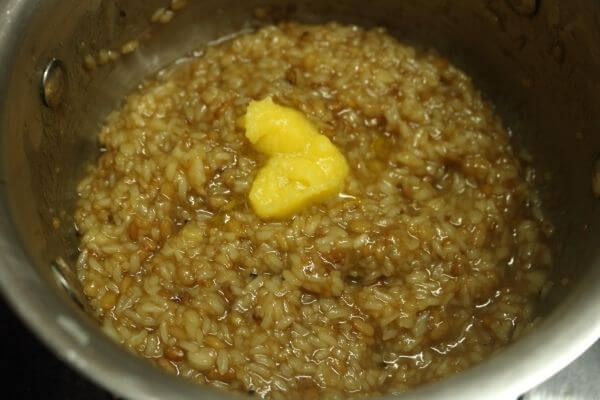

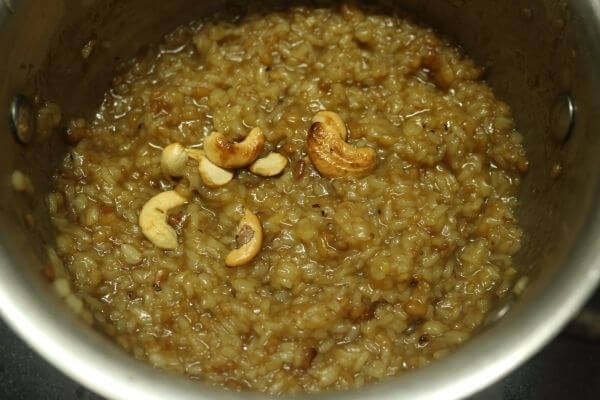
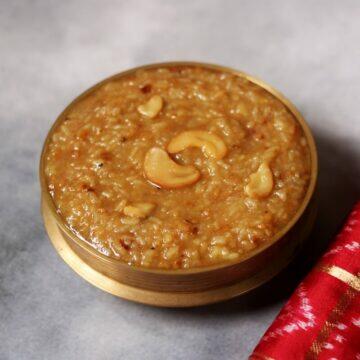

I tried andhra recepies. They are very delicious. Thank u very much for your help and hard work.
In the recepies when u mention cup is it possible to give may be grams or ml. This would really help us.
Once again i really appreciate your help and passion sharing good recepies with others
Thank you
Thank you for the compliments. I will certainly implement your suggestion; it is an excellent one. In the meantime, please note that when I mention cups, teaspoon or tablespoon measures, these are the standard baking measures that you get in the market.